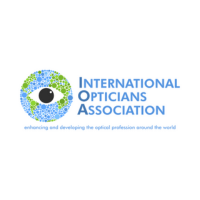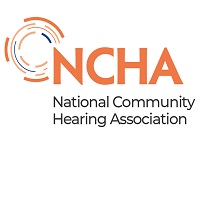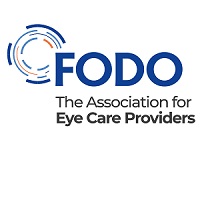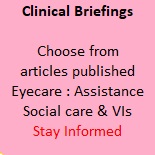Ophthalmology and OMPs
Alcon Announces FDA Approval of TRYPTYR
Alcon Announces FDA Approval of TRYPTYR (acoltremon ophthalmic solution) 0.003% for the Treatment of the Signs and Symptoms of Dry Eye Disease
- In pivotal Phase 3 trials, TRYPTYR demonstrated rapid natural tear production as early as Day 11-2
- TRYPTYR is a first-in-class TRPM8 receptor agonist that rapidly stimulates natural tear production in patients with Dry Eye Disease (DED)3
- Approximately 38 million individuals in the U.S. are living with DED, yet less than 10% of diagnosed patients are being treated with a prescription product4
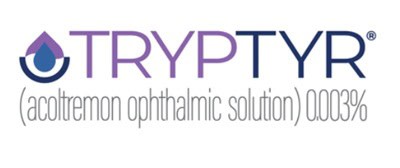 Alcon , the global leader in eye care dedicated to helping people see brilliantly, today announced the U.S. Food and Drug Administration (FDA) has approved TRYPTYR® (acoltremon ophthalmic solution) 0.003%, formerly known as AR-15512, for the treatment of signs and symptoms of Dry Eye Disease (DED).3 TRYPTYR is a first-in-class TRPM8 receptor agonist (neuromodulator) that stimulates corneal sensory nerves to rapidly increase natural tear production.3
Alcon , the global leader in eye care dedicated to helping people see brilliantly, today announced the U.S. Food and Drug Administration (FDA) has approved TRYPTYR® (acoltremon ophthalmic solution) 0.003%, formerly known as AR-15512, for the treatment of signs and symptoms of Dry Eye Disease (DED).3 TRYPTYR is a first-in-class TRPM8 receptor agonist (neuromodulator) that stimulates corneal sensory nerves to rapidly increase natural tear production.3
TRYPTYR® (acoltremon ophthalmic solution) 0.003% logo
DED is a complex, multifactorial condition driven by a deficiency in natural tears, whether due to decreased tear production or increased tear evaporation.5-7 Many commonly used DED treatment options have limitations, including slow onset, patient dissatisfaction and poor adherence.8-14 Among surveyed dry eye patients, only 13% felt their dry eye was well managed.14*
“Today marks a tremendous milestone for Alcon as TRYPTYR becomes our first prescription pharmaceutical treatment to be approved by the FDA since becoming an independent, publicly traded eye care company,” said David Endicott, CEO of Alcon. “We look forward to making this new treatment available to millions of patients affected by Dry Eye Disease. We believe TRYPTYR is an exciting new treatment option for a significant number of dry eye patients given its rapid efficacy.”
This approval is supported by two Phase 3 clinical trials evaluating more than 930 patients (randomized 1:1 to TRYPTYR or vehicle) with a history of DED.1-2 In COMET-2 and COMET-3, up to four times more TRYPTYR patients experienced at least a 10mm increase in natural tear production at Day 14, compared to vehicle, 42.6% versus 8.2% of patients in COMET-2 and 53.2% versus 14.4% in COMET-3 (both p<0.0001).1-2 Consistent results were observed at all timepoints through Day 90. TRYPTYR demonstrated statistically significant natural tear production as early as Day 1.1-2
“Many of my patients continue to face frustrating challenges with dry eye management, and there is a clear need for additional treatment options,” said Marjan Farid, MD, Professor of Ophthalmology at the University of California, Irvine. “TRYPTYR is the first eye drop that stimulates corneal nerves to directly address tear deficiency, a known cause of Dry Eye Disease.”
Studies in animals suggest that acoltremon, the active substance in TRYPTYR, is an agonist of transient receptor potential melastatin 8 (TRPM8) thermoreceptors. TRPM8 thermoreceptor stimulation has been shown to activate trigeminal nerve signaling leading to increased basal tear production. The exact mechanism of action for TRYPTYR in DED is unknown.
TRYPTYR is available in easy-to-use, single dose vials: one drop per eye, two times a day.3 Alcon expects to launch TRYPTYR in the U.S. in the third quarter of 2025 and anticipates bringing TRYPTYR to other markets in the future.
INDICATIONS AND USAGE
TRYPTYR (acoltremon ophthalmic solution) 0.003% is indicated for the treatment of the signs and symptoms of dry eye disease (DED).
IMPORTANT SAFETY INFORMATION
Warnings and Precautions
Potential for Eye Injury and Contamination: To avoid the potential for eye injury and contamination, advise patients not to touch the vial tip to the eye or other surfaces.
Use with Contact Lenses: TRYPTYR should not be administered while wearing contact lenses. If contact lenses are worn, they should be removed prior to administration of the solution. Lenses may be reinserted 15 minutes following administration of TRYPTYR.
Adverse Reactions
In clinical trials, the most common adverse reaction was instillation site pain (50%).
Please click here for the TRYPTYR Full Prescribing Information.











